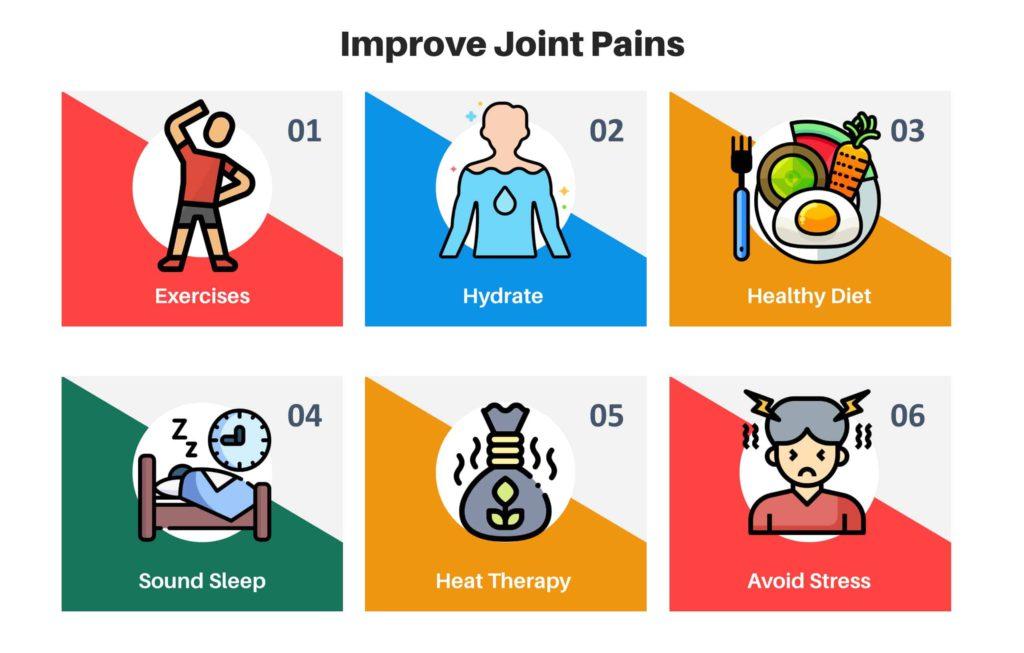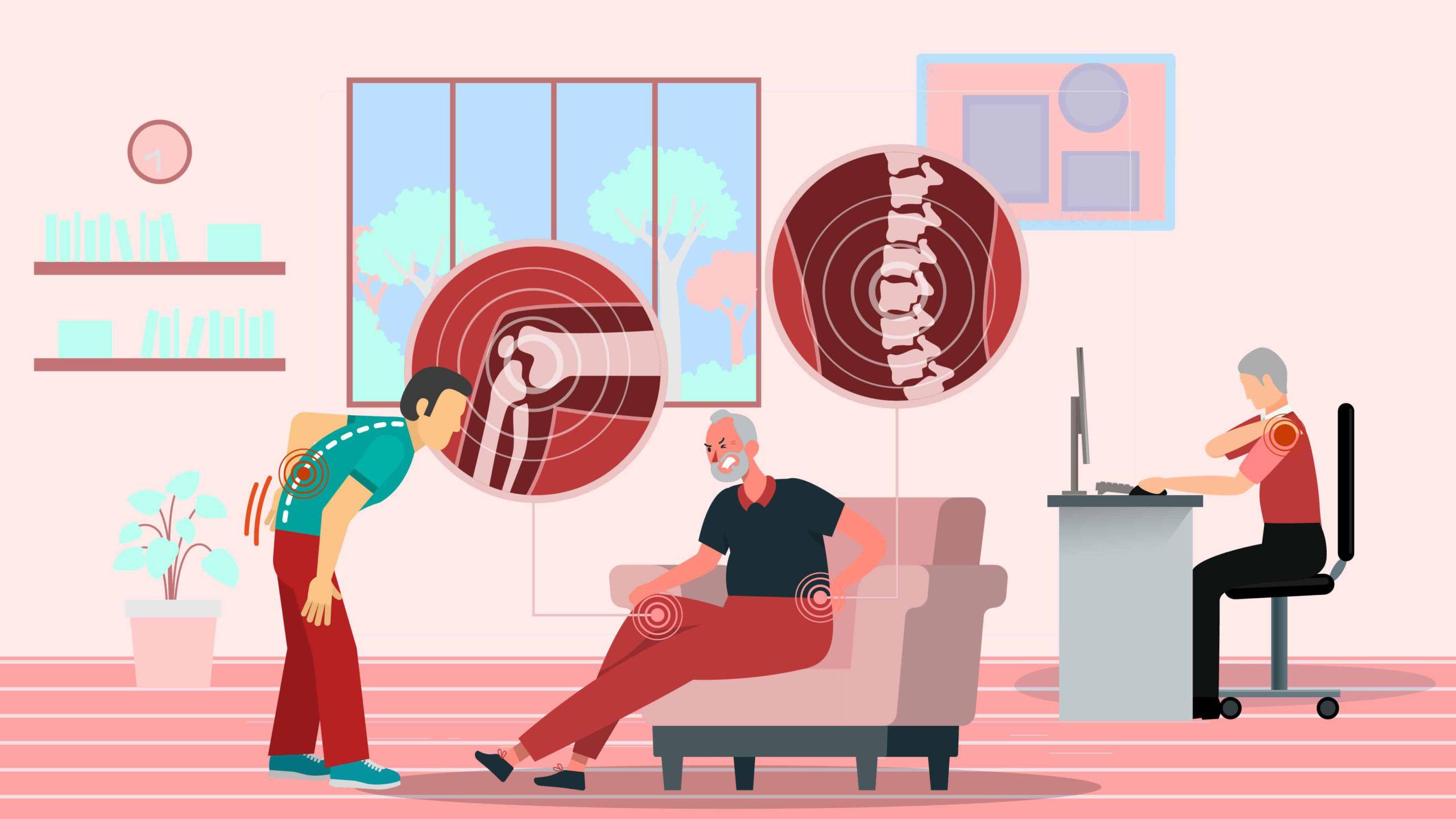Article Contents
Introduction
Almost every senior goes through pain in joints and bones. Joint pains in seniors is also known as arthritis. You don’t have to stop doing the activities you enjoy because you have arthritis. While there is no cure for arthritis, it is more than possible for seniors with arthritis to remain active and healthy with the proper support, planning, and therapy.
The wrists, knees, hips, and spine are the most commonly affected joints, but they can affect any joint in the body. Although arthritis symptoms differ from person to person and depending on the type of arthritis present, the following are some of the most prevalent symptoms:
- Pain
- Joint inflammation
- Stiffness
- Joint moving difficulty
There are certain medications for seniors that doctors provide to relieve the pain. But is there anything else that you can do? Take a look at these suggestions to improve joint pains in seniors.
6 Ways of Joint Pain Relief for Seniors
First and foremost: Make sure you’ve been following your doctor’s pain-management recommendations. After you’ve taken care of that, consider how you may make lifestyle modifications to assist you in managing arthritis pain.
1. Regular physical exercise
It’s critical to be active as much as possible if you have joint pain and inflammation. It may appear that sitting motionless may aggravate your symptoms, but the worst thing you can do is remain still. This is because joint lubrication is dependent on movement.
One of the most effective joint pain reliefs for seniors is regular exercise. Exercising can help you:
- Reduce pain
- Maintain joint mobility
- Strengthen the muscles that surround your joints
- Achieve and maintain a healthy body weight
- Relieving stress and improving your posture, balance, and overall health
Seniors benefit from exercise in general because it enhances their overall health and fitness. This, however, should not be unduly taxing. Low-impact workouts such as yoga, swimming, water aerobics, and strength training should be prioritized.
Above all, don’t stagnate; instead, adapt. There are so many types of physical exercises for senior citizens! Ask your exercise and health experts how you may tweak your favorite hobbies to be active while having fun! All of our senior living alternatives across the country allow seniors to get up and move around.
2. Being hydrated with lots of fluid
Because water makes up 70% to 80% of your bone structure, it should come as no surprise that dehydration in seniors can exacerbate joint discomfort. Also, fatigue, confusion, headaches, and other signs can all mean dehydration outcomes.
Overall, your body performs better, your joints feel better, and you have more energy when you’re well hydrated. Depending on your activity level and how hot and dry the weather is, you’ll need at least 2 liters of liquids (total eight 8-ounce glasses) every day.
We all know how boring water can be. So, how to keep seniors hydrated? Tea or juice can be used as a supplement. Just keep in mind that many juices are heavy in sugar; to have the best of both worlds, combine half and half with water. Apart from that, Pedialyte and Gatorade are two of the best hydration drinks for seniors.
3. Maintaining a healthy and nutritious diet
A balanced diet that focuses on overall health and healthy body weight is ideal for any type of arthritis. Being overweight puts more strain on joints, causing pain and making it difficult to move. Even a few additional kgs can make a significant difference.
Maintaining a healthy diet for senior citizens can help them acquire enough critical vitamins and minerals to improve the health of their bones and cartilage. Take a look at our list of superfoods for seniors to learn about some healthy meal options.
Senior homes’ cooking teams work tirelessly to ensure that each meal is as nutritional as it is delightful. The senior care facilities have daily dining that provides you eat a healthy and balanced diet.

4. Maintaining a proper sleep schedule
Pain, inflammation, and sleep are all closely linked, according to research. So, developing proper sleep hygiene is generally the first step toward a comfortable night’s sleep.
Creating a more regular sleep schedule for seniors and developing proper sleep hygiene is the first step toward a good night’s sleep. Here’s senior’s recommended sleep schedule and sleep hygiene tips:
- Try to stick to a regimen. Every night, go to bed at the same time.
- Get warm and cozy bedding, pillows, blankets, and pajamas. Also, keep your bedroom cooler than the rest of the house.
- One hour before night, turn off your computer, television, and cell phone.
- Avoid any alcohol and caffeinated beverages before bedtime.
5. Heat therapy sessions
You can reduce inflammation and soreness by applying heat to your joints. Take a long shower or bathe in a warm bath when you’re feeling particularly achy. You can use a regular and straightforward hot water bottle for this. Or there is even an electric heating pad to apply to the affected area. The discomfort will dissipate.
Just make sure you don’t burn and hurt yourself.
6. Being away from stress and emotional pressure
Stress and emotional pressure is one of the joint pain causes for seniors. Learning to cope with stress in a healthy way can help people with arthritis. There are three components of stress management for seniors:
- Explore ways to cope with stress
- Accept what you can’t change
- Overcome the negative consequences of stress
Arthritic joints are unable to withstand the same amount of force as other healthy joints. As a result, pushing, tugging, and twisting activities can be unpleasant. Consider how you might prevent putting undue strain on your joints.
If pain lingers for more than an hour after doing an activity, consider modifying how you do it. You can follow the 2 steps:
- Take adequate rests
- Use assistive movement tools
Throughout the day, switch between sitting and then stretching. Don’t just stay in one place all the time. Instead, opt for moderate to intense activities.
If your feet hurt, make sure you’re wearing the right shoes. For particular suggestions, consult your doctor or physiotherapist.
Conclusion
One of the most challenging things for seniors to do is ask for help.
Maintaining senior independence is vital for their self-esteem. But maintaining independence at any cost is a foundation of misery.
Living with arthritis can be inconvenient and unsettling. The discomfort and stiffness can make it difficult to do the things that most people take for granted on a daily basis. Even the simplest tasks, such as putting on socks or preparing dinner, can be taxing. As a result, it’s critical to get assistance for joint pains in seniors.
Learn how a retirement community can make it simpler to live with arthritis.

